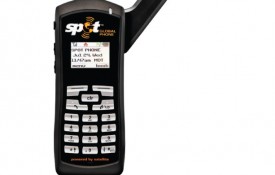The Rolex Submariner was originally created in 1953 with the intent of being the first divers’ wristwatch approved to a depth of 100 meters in order to meet the needs of the new deep-sea diving professionals. The collector favorite was updated for 2020 with calibre 3230, self-winding mechanical movements created entirely by Rolex. Here, a look at other things to know about the iconic timepiece.
1. It takes about a year to make one Rolex Submariner. The dial, case, movement, and bracelet all factor into the time it takes to finish. It is rare for watch companies to master in-house dial creation because of the number of skills needed. The new-generation Submariners are equipped with calibre 3230—launched this year—and calibre 3235 movements entirely developed and manufactured by Rolex.

Rolex has its own gold foundry where closely guarded formulas produce gold alloys specific to the brand.
2. An in-house foundry makes all of the brand’s gold. Rolex gold is made of only the purest metals, and inspected in an in-house laboratory with state-of-the-art equipment. These metals are alloyed by fusion in a crucible at over 1,000° C, according to closely guarded formulas to produce the 18-ct. yellow, white, and Everose gold alloys specific to Rolex.

Inside the Rolex workshop in Switzerland.
3. The Submariner uses 904L stainless steel. What makes this steel different from regular stainless steel? A non-stabilized, austenitic stainless steel, 904L has a low carbon content. This high-alloy stainless steel is added with copper to improve its resistance to strong reducing acids, such as sulphuric acid.

The 2020 Submariner is an evolution of the original version launched in 1953.
4. The movement features a para-chrome hairspring, which allows the watch to withstand temperature fluctuations and shock resistance, making it one of the most reliable watches on earth. The spring regulates how fast or how slow the hands move (and thus how accurate the watch is) and resists outside forces, including temperature variations, magnetism, and shocks.

The blue para-chrome hairspring required five years of research to perfect.
5. A cyclops lens is included on the crystal. Patented by Rolex in the early 1950s, the cyclops lens was introduced for the first time in 1953 on a Datejust model. This innovation makes for appreciably easier reading of the date and has become a signature feature of the brand. Also in sapphire, it now has a double antireflective coating for optimum legibility of the date and is affixed to the crystal.













































